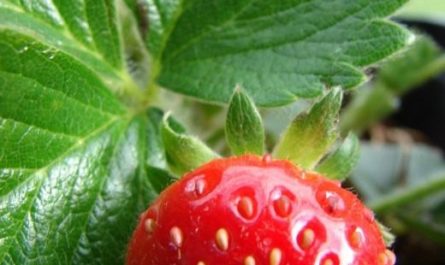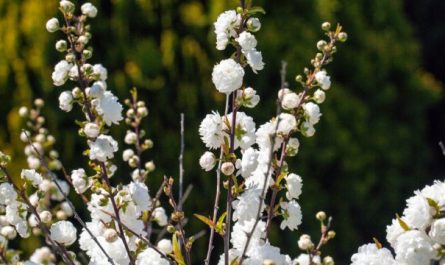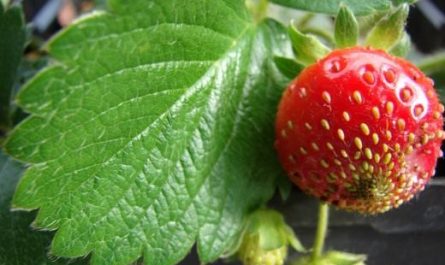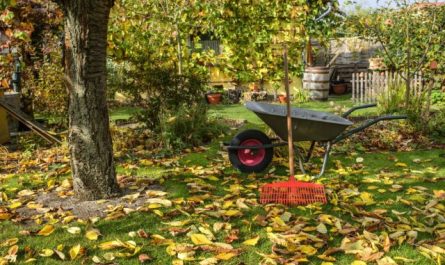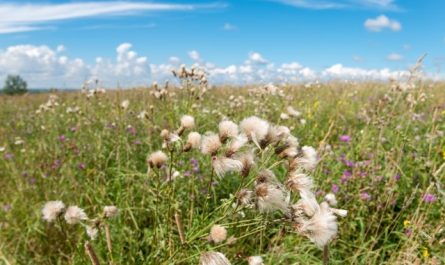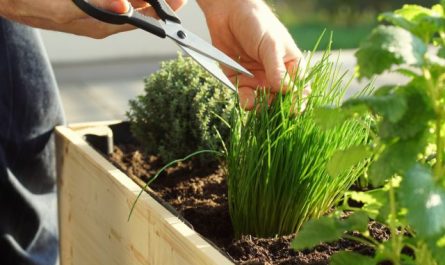Long-term communication with pepino allowed us to understand (although not completely) its biological characteristics, cultivation technology. But the main thing is that we managed to adapt the perennial shrubby semi-woody plant, an inhabitant of the southern range, to our conditions and cultivate it as an annual plant in open ground, obtaining a harvest of wonderful fruits.
The agricultural technology of this new crop is similar to the agricultural technology of tomatoes, with the possible exception of preserving the mother plants during the winter.

Reproduction of Pepino
Pepino can be propagated by seeds and cuttings. Seeds from grown fruits have high sowing qualities – germination and germination energy. We sow seeds in late January – early February in a light and loose soil mixture. They are small, so we do not bury them in the soil, but only sprinkle them lightly.
To retain moisture, cover the vegetation with film or glass. The optimum temperature for seed germination is 26-28°C. Shoots appear in 5-7 days. In the phase of two or three true leaves, pick the seedlings into pots and cups, deepening them to the cotyledons. To prevent black leg disease, use steamed soil mixture or pre-water it in planting containers with a solution of potassium permanganate. Cover the picked seedlings with film (over the arches) to maintain air humidity and better survival of the seedlings. In the first month, they grow very slowly and by the time of planting in open ground they reach 8-10 cm in height, forming 7-8 leaves.
Now we have simplified the cultivation of seedlings. After checking the germination, we sow the seeds at once, 2-3 at a time, in cups. The plants develop in them (without picking) until they are planted in open ground. Additional lighting helps speed up the development of seedlings. It saves time and does not injure the root system of plants.

To grow pepino from seeds in protected and open ground, you should know that even under favorable conditions, not all pepino varieties produce full-fledged seeds. Due to the splitting of varietal characteristics, seedlings not only bloom late, but also form heterogeneous fruits, which leads to a loss of variety purity.
The most reliable way to propagate and grow pepino is by rooted cuttings. You need to start separating cuttings from overwintered plants from mid-February. To do this, cut off the apical part of the shoot with 7 leaves. Remove the lower 2 leaves, and shorten the next 2-3 by half to reduce moisture evaporation. If there is a shortage of mother plants, you can also use the lower part of the shoot with 4-5 internodes as planting material, also removing and shortening the leaves.
It is best to root cuttings in a standard cutting bed, if you don’t have one – in a shallow container. Do not place the cuttings tightly in the container. There should be enough water so that the lower leaves of the cuttings do not sink into it.
Pepino cuttings root almost 100% without any stimulants. At normal room temperature (20-24 °C), after 5-7 days, roots 1,5-2,0 cm or more long grow on the cuttings. This is the most favorable time for planting rooted cuttings in seedling pots or plastic disposable cups. Several small holes should be made in the bottom of the cups to drain excess water during watering. The soil in the seedling container should be as loose as possible, since pepino roots are sensitive to a lack of air in the substrate.

Cuttings can be planted in seedling containers without rooting in water. In this case, they need more attention. Cuttings should be in moist soil and with increased air humidity. Such cuttings take root within two weeks. It should be remembered that containers with rooting cuttings, with planted rooted cuttings should be under a film to maintain the necessary increased air humidity during this period.
Preparing the soil and planting seedlings
Pepino prefers light fertile soils with neutral acidity. The best predecessors are early harvested crops: cucumber, onion, garlic, beans. After harvesting the predecessor, loosen the soil, clear it of weeds, and, if possible, dig it up before the onset of cold weather.
In spring, when the soil is ripe, we loosen it to retain moisture until planting. Before planting seedlings, we prepare shallow trenches at the site of future rows (the distance between them is 70 cm) to a double shovel width and add organic fertilizers to them: after a fertilized predecessor – well-decomposed manure or compost – 3-4 kg / m2, after unfertilized – 6-7 kg / m2 and ash.
We plant seedlings in open ground in early May, when the threat of recurrent frosts has passed. We orient the rows from north to south, we arrange the seedlings in a checkerboard pattern, deepening them 2-3 cm lower than they grew in the container. We plant the seedlings in moist soil in the afternoon or evening. The distance between plants in a row is 40-50 cm. After planting, we water the plants and mulch them with dry soil. This reduces moisture evaporation and improves the conditions for the seedlings to take root. Depending on the weather conditions, we repeat watering after 2-3 days.

In recent years, we have been planting seedlings at the same time as tomatoes — in mid-April. This allows us to get ripe fruits 2-3 weeks earlier, as well as extend the growing season and thereby increase the productivity of plants. To protect pepino from possible frosts, we install a simple structure made of wooden blocks or reinforcing wire over the rows of planted plants and cover it with film or spunbond. We lay a drip irrigation tape under the film along the row of plants. In such conditions, the plants take root well and begin to grow. When the temperature rises on sunny days (hours), we lift one side of the shelter so that the plants are ventilated and hardened.
We uncover the pepino when the weather is consistently warm (usually May 5-10). By this time, the plants have had time to take root well, get stronger, and begin to grow intensively. Now is the time to install the trellises. Along each row, at intervals of 2-3 m, we drive fairly strong supports (thick metal reinforcement, pipes, etc.) 70-80 cm high into the soil. We stretch a single-core wire onto them in three rows (every 18-20 cm), which does not sag under the weight of the fruit.
In 2-3 weeks after planting, we begin to form and tie up the plants. Usually, we leave 2-3 well-developed shoots, and remove the rest without regret. We tie the remaining shoots to the lower trellis (the lower row of wire): the central stem vertically, the side stems with a slight deviation to the sides.
A mandatory technique when growing pepino is pinching out the side shoots. The plant bushes out very strongly and forms many side shoots. We remove the side shoots when they reach 3-5 cm in length, leaving small stumps (0,5-1,0 cm) on the stem, which prevent new side shoots from appearing in the axils of the same leaves. Plants need to be pinched out regularly – every week.

As it grows, we tie the stems to a trellis located above. An untied plant without pinching out the side shoots under the weight of its mass and lies on the ground, the stems take root and practically do not bear fruit.
Pinching off the side shoots and tying them to a trellis allow plants to use the sun’s radiant energy rationally. We do not tie the fruits to the trellis; the long and strong flower stalks allow us to simply hang them on the trellis.
During the growing season, plants often show overshooting – the undeleted side shoots outgrow the apical shoot in growth and grow 1-2 nodes before the next inflorescence. Leaving them one by one on the stem, you can form an additional stem, prolonging the fruiting of the plant.
Further care of the plants is normal: loosening the soil in the rows and between the rows, removing weeds, regular watering, fertilizing, destroying pests and pathogens. The first fertilizing is done after the seedlings have taken root. We use an infusion of mullein (1:10) or bird droppings (1:20). The second time we feed the plants when fruits are forming with the specified infusions or an infusion of green fertilizer (1:20). After fertilizing, we water the plants. Immediately wash off with water any solution that gets on the leaves.
We do not use mineral fertilizers. If necessary, you can use mineral supplements (10 g of ammonium nitrate, 15 g of superphosphate and potassium sulfate per 10 liters of water) during the flowering period and at the beginning of abundant fruiting.

Protection against pests and diseases
The complex of pests and diseases has not yet formed due to the extremely limited cultivation of pepino. Only individual species of harmful organisms have found a new food plant, causing harm to it. Among them are the Colorado potato beetle, spider mite, aphid (melon, green peach), whitefly.
Pepino is also affected by diseases: black leg mows down the shoots, bacterial root rot develops when the soil is over-moistened, and late blight may appear in the second half of the growing season if favorable conditions arise for the development of the pathogen.
Plants are also sensitive to nightshade viruses. There are isolated cases of infection with the leaf bronzing virus – affected leaves with a bronze tint turn black and curl. The plant noticeably lags behind in growth and does not form normally developed fruits. To prevent re-infection of other plants by sucking pests (aphids, leafhoppers), such a bush should be removed.
There are no registered preparations for pest control when growing pepino in Ukraine. If necessary, you can use insecticides and fungicides recommended for protection against pests and diseases of tomatoes, eggplants, which belong to the same biological group as pepino (nightshade family). Experts note the increased sensitivity of pepino to some preparations and consumption rates acceptable for other vegetable nightshade crops. Therefore, it is advisable to first treat one stem of the plant with a preparation at the recommended consumption rate to ensure that the working solution is not toxic.
It is necessary to protect pepino from pests not only in the open ground in summer, but also the mother plants wintering indoors. It is possible to limit the development of spider mites, whiteflies, and aphids on plants in winter by treating them with insecticides when preparing and transplanting mother plants for wintering. Recommended preparations are used to destroy these pests on tomatoes and eggplants. If the preparations are compatible, the treatment can be carried out with a mixture of an insecticide (to destroy aphids and whiteflies) and an acaricide (to destroy spider mites). But this must be done before moving the plants to a living space, so that unpleasant and harmful fumes of preparations from plants and soil are eliminated.

In winter, if there is a need to treat against pests, it is best to use decoctions or infusions of phytoncidal plants (marigolds, tobacco, shag, yarrow, onion peel, garlic), which should be prepared in the summer. Spray the plants with infusions and decoctions every 5-7 days.
If there are no phytoncidal plants, but there is a need to get rid of pests, the treatment is carried out with actellic, 500 EK, k. e. (2 ml per 1 l of water) or confidor, v. r. k. (2-2,5 ml per 1 l of water) in a separate room, observing all safety measures. After drying, the plants are brought into the living area.
Preparation of mother plants
The fruits on the plants are still ripening, but it is already time to take care of growing the mother plant material for the next season. We begin growing the mother plants from the side shoots of the plants in mid-August so that by the end of the growing season they have formed a well-developed root system.
Plants can be prepared for wintering in different ways:
- Grow young plants from shoots rooted in June-July. Shorten the main stems, leaving only a few lower shoots. The root system of the plants has already formed, it is not exhausted by fruiting. With proper care, the plants will successfully survive the winter period.
- Grow plants from side shoots in the second half of August. Side shoots grown in September do not have time to develop into a strong plant if the weather gets cold early in the fall.
It is better to plant stepchildren next to the mother plants, where they will be protected from the hot rays and provided with moisture. - Grow plants from the stepsons of a rooted shoot. To do this, you need to leave one shoot of the lower tier on the bush, give it a chance to grow, then bend it and pin it to the ground. When in contact with moist soil, more than a dozen stepsons grow on the shoot and they already have a root system. It remains to cut the stem and plant the finished plants.

Before planting, cut off 1-2 lower leaves and plant the plant in a container, slightly deeper than the removed leaves, so that additional roots can form. Leave 5-7 leaves on the above-ground part of the stepson, from the sheaths of which new shoots will grow, forming a compact plant.
Preservation of mother plants
Plants prepared for overwintering are dug up at the end of September with a drop in nighttime temperature to 14-15°C with a lump of earth, without damaging the root system. Place in a container corresponding to the volume of the dug lump. Pour expanded clay into the bottom of the container for drainage and a layer of prepared soil mixture. Drainage holes are made in the bottom of the container to drain irrigation water.
We leave the transplanted plants outside for a few days so that they can take root better. The growth processes of pepino stop at a temperature of 12-13°C. Therefore, we bring the plants indoors in time. We place them on the windowsills of southern-facing windows and care for them as for ordinary houseplants.
Plants exposed to the north side may shed their leaves during frosty periods when the room temperature drops below 10-12°C (taking into account the proximity of the leaves to the window frame). When the temperature rises, leaves grow back on the shoots in 2-3 weeks, stepsons grow from their axils, and by the beginning of April they can already be rooted for propagation. Plants respond gratefully to illumination, noticeably increase in growth, and the leaves acquire a more intense color. If desired, overwintered plants can continue to be grown indoors (balcony, loggia), transplanted into a larger container.

When mother plants are harvested in larger quantities than can be accommodated in living quarters, the storage issue is resolved by the plant itself, its biological feature – a tendency to a dormant period, inherent in woody crops and shrubs.
Mother plants can be stored in both lighted and dark rooms. Preparation for such storage of plants consists of the following: watering and feeding of plants are gradually reduced to a minimum, the temperature is gradually reduced to 3-4°C over 5-6 weeks. Metabolic and growth processes slow down, the plant sheds its leaves.
To prevent the development of fungal diseases, the air humidity should be low, ventilation should be good, and watering should be at a level that does not dry out the roots. Under such conditions, the dormant period lasts up to 1,5-2 months (December-January).
When favorable light conditions arrive, we move the plants to a bright room, water them with warm water, feed them and grow them until mid-April, when it is time for the grown shoots and stepsons to take root.


